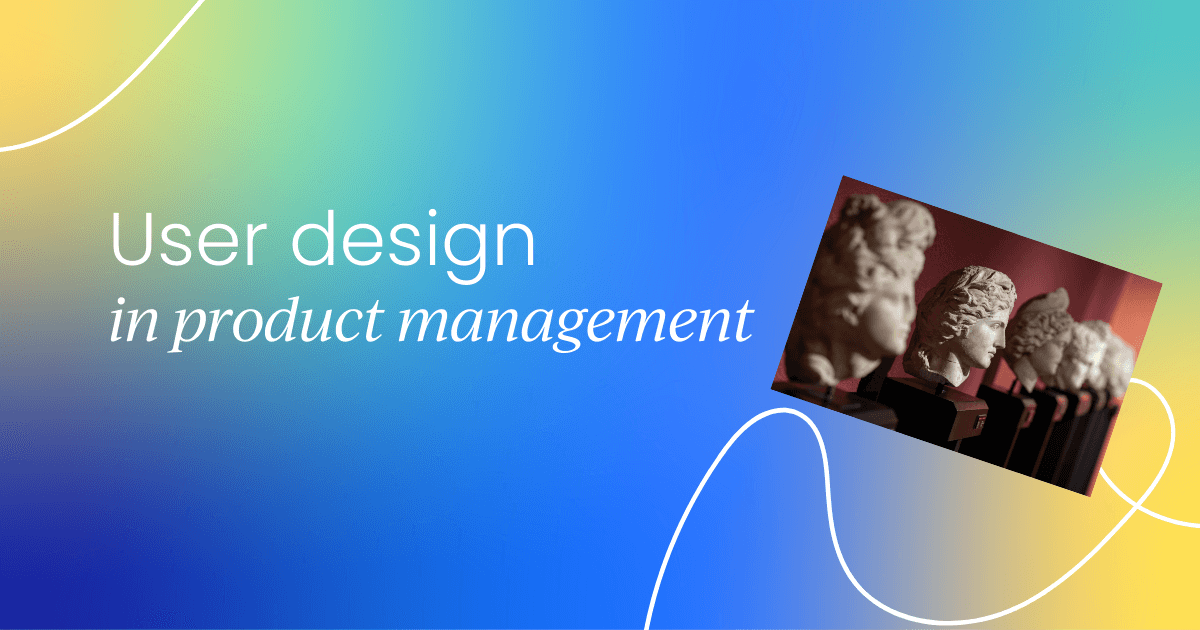When you think about a product that you love, what comes to mind? Is it the sleek design, the intuitive interface, or the way it seems to understand exactly what you need? These delightful experiences are the result of thoughtful user design, a crucial aspect of product management.
In this article, we’ll explore the intersection of user design and product management, diving into the user experience design process, wireframes, principles, and the importance of integrating these elements into successful product design.
What is user experience design?
User experience (UX) design focuses on crafting products that deliver significant and pertinent experiences to users. It encompasses the complete journey of obtaining and incorporating the product, covering elements such as branding, design, usability, and functionality. But it's not just about making things look pretty; it’s about making sure they work well and are easy to use.
The user experience design process
The user experience design process is a structured approach to creating a user-centric product. This process can be broken down:
- Research
Understanding the user is the foundation of UX design. This is done by gathering qualitative and quantitative data. You would use methods such as surveys, usability testing, and interviews. The goal is to gain insights into the users' needs, behaviors, and pain points.
- Define
Once the research is complete, the next step is to synthesize the data to define user personas and user journeys. This helps in identifying the core problems that need to be solved.
- Ideate
In the ideation phase, designers brainstorm a wide range of ideas and solutions. This is a creative stage where all possible options are considered before narrowing down to the most promising ones.
- Prototype
Prototyping involves creating wireframes and mockups. Wireframes are basic, low-fidelity representations of the product, focusing on layout and functionality without the distraction of visual design. This allows designers to quickly test ideas and get feedback.
- Test
Testing is a critical phase where prototypes are evaluated by real users. This helps in identifying any usability issues and gathering feedback to refine the product.
- Implement
Finally, the refined designs are handed over to the development team for implementation. The UX designers work closely with developers to ensure that the final product stays true to the design vision.
- Launch and evaluate
After launch, it's essential to monitor user feedback and analytics to continuously improve the product. This iterative process ensures that the product evolves with user needs and technological advancements.
The importance of wireframes in UX design
Wireframes play a crucial role in the user experience design process. They are like the blueprint of a building, providing a visual guide that represents the skeletal framework of the product. But why are wireframes so important?
Wireframes help in visualizing the layout of the product without the distraction of colors, images, and other design elements. This allows designers to focus on functionality within the user flow. They also serve as a communication tool between designers, stakeholders, and developers. By providing a clear and concise representation of the product, they make it easier for everyone to be on the same page.
Because wireframes are simple and low-fidelity, they can also be created and modified quickly. This allows for rapid prototyping and testing, helping to identify and solve problems early in the design process.

Key user experience design principles
Effective user experience design is guided by several key principles. These principles ensure that the product is not only functional but also enjoyable to use. Here are some important UX design principles:
- User-centricity: The user should always be at the center of the design process. This means understanding their needs, behaviors, and preferences and designing the product to meet those needs effectively.
- Consistency: Consistency in design helps users to predict what will happen next, making the product easier to use. This includes the use of colors, typography, and even layout.
- Simplicity: Simplicity is key to a good user experience. This means designing interfaces that are easy to understand and navigate, avoiding unnecessary complexity.
- Feedback: Providing feedback to users helps them understand the result of their actions. This can be through visual cues, sounds, or haptic feedback.
- Accessibility: A good design should be accessible to all users. This involves designing for various screen sizes, using appropriate color contrasts, and providing alternative text for images for people with disabilities.
- Flexibility: Flexibility in design means providing users with multiple ways to complete tasks. This can accommodate different user preferences and skill levels.
Integrating UX design into product management
To ensure that UX design is integral to the product development process, product managers should advocate for its importance, educating stakeholders on the value of user-centered design and its impact on success. Collaboration with UX designers is essential throughout the development stages, ensuring user needs are prioritized from ideation to implementation.
Emphasizing user research is crucial, with product managers allocating resources to gather thorough insights that inform design decisions. Data-driven decisions, guided by user research, usability testing, and analytics, help create aesthetically pleasing and user-centric products. Finally, fostering an iterative design process with regular testing and feedback enables continuous improvement and refinement over time.
Challenges in integrating UX design and how to overcome them
Integrating UX design into product management is not without its challenges. Here are some common challenges and how to overcome them:
- Resistance to change
Resistance to change within the business is one of the biggest challenges. This can be overcome by educating stakeholders about the value of UX design and demonstrating its impact on the product's success.
- Limited resources
Limited resources can make it difficult to allocate time and budget for UX design. Product managers should prioritize user research and design activities that have the most significant impact on the user experience.
- Balancing business goals and user needs
Balancing business goals with user needs can be challenging. Product managers should strive to find a balance between meeting business objectives and providing a great user experience.
- Keeping up with technological advancements
The rapid pace of technological advancements can make it challenging to stay current with the latest design trends and tools. Continuous learning and staying informed about industry developments can help overcome this challenge.
Future trends in user experience design
User experience design will continue to evolve as technology changes. Here are some things to keep an eye on:
- Voice User Interfaces (VUI): With the rise of smart speakers and voice assistants, voice user interfaces are becoming increasingly important. This involves creating intuitive voice interactions to ensure accessibility for all users.
- Artificial Intelligence (AI): AI is transforming the way we design user experiences. AI-powered tools can analyze user behavior, predict preferences, and provide personalized experiences.
- Augmented Reality (AR) and Virtual Reality (VR): AR and VR are opening up new possibilities for immersive user experiences. Designing for these technologies involves creating intuitive and engaging interactions in virtual environments.
- Inclusive design: Inclusive design is about creating products that are accessible to everyone, regardless of their abilities. This involves considering a wide range of user needs and designing for diversity.
- Emotional design: Emotional design focuses on creating products that evoke positive emotions and create memorable experiences. This involves understanding the emotional needs of users and designing to meet those needs.
Conclusion
User design is a critical aspect of product management, shaping how users interact with and perceive a product. By understanding and implementing the user experience design process, creating effective wireframes, adhering to UX design principles, and integrating these elements into product management, companies can create products that are both functional and easy to use.
The job market is competitive, but you can stand out. Whether you're starting your career, recently laid off, or seeking a better opportunity, your Getting Hired in Product playbook is designed to guide you every step of the way.
From understanding product roles to negotiating your job offer, this playbook has got your back.
Sign up to get the playbook now.




 Follow us on LinkedIn
Follow us on LinkedIn




